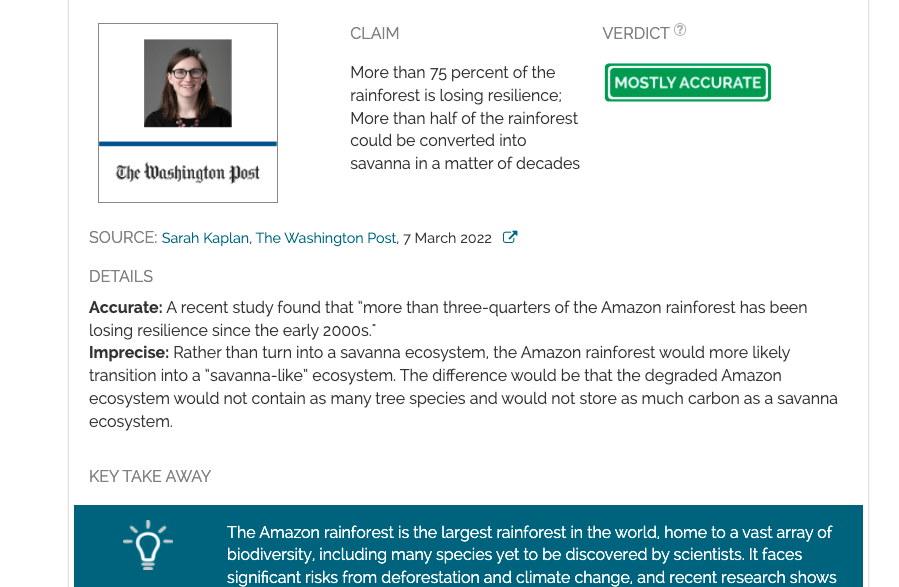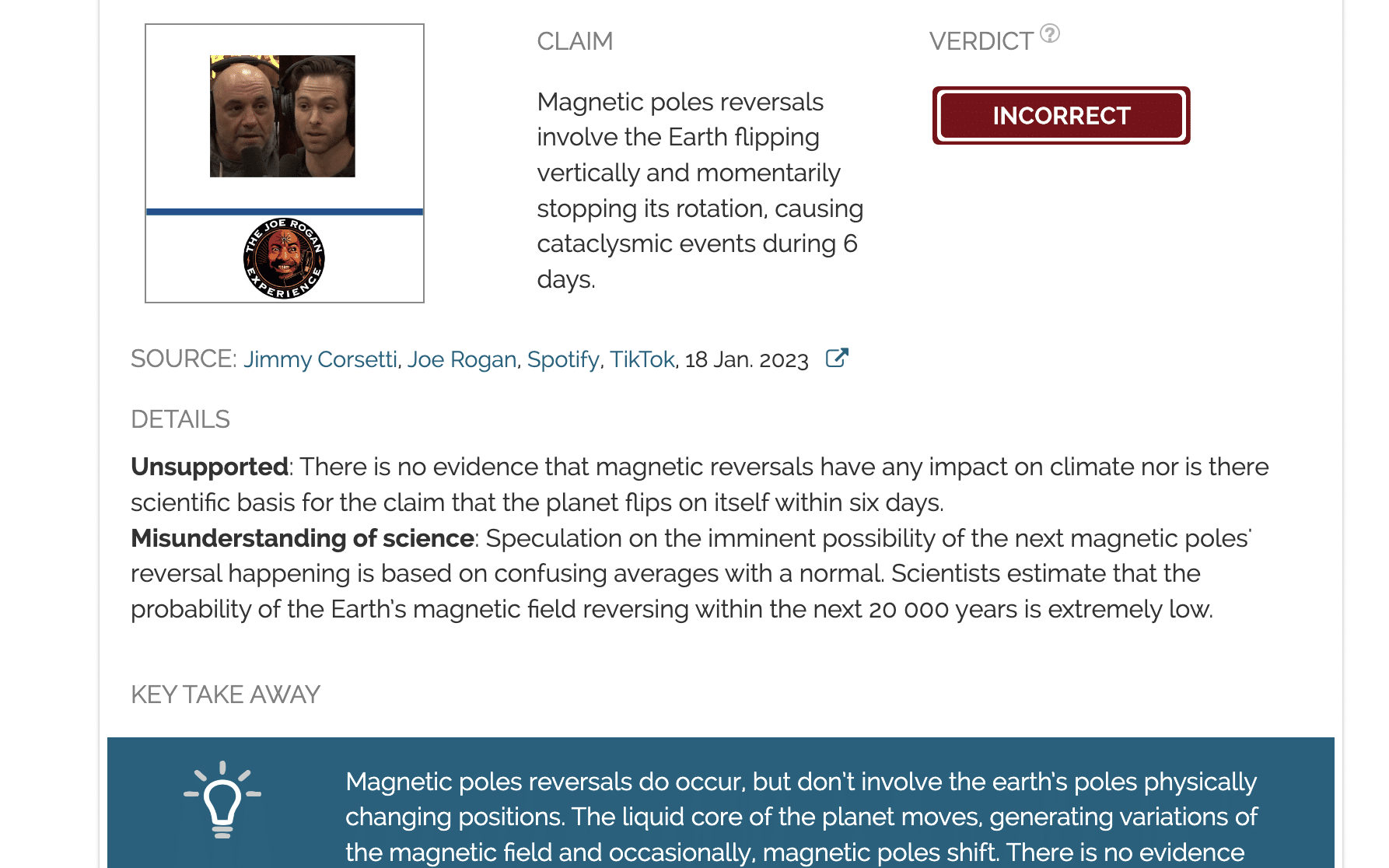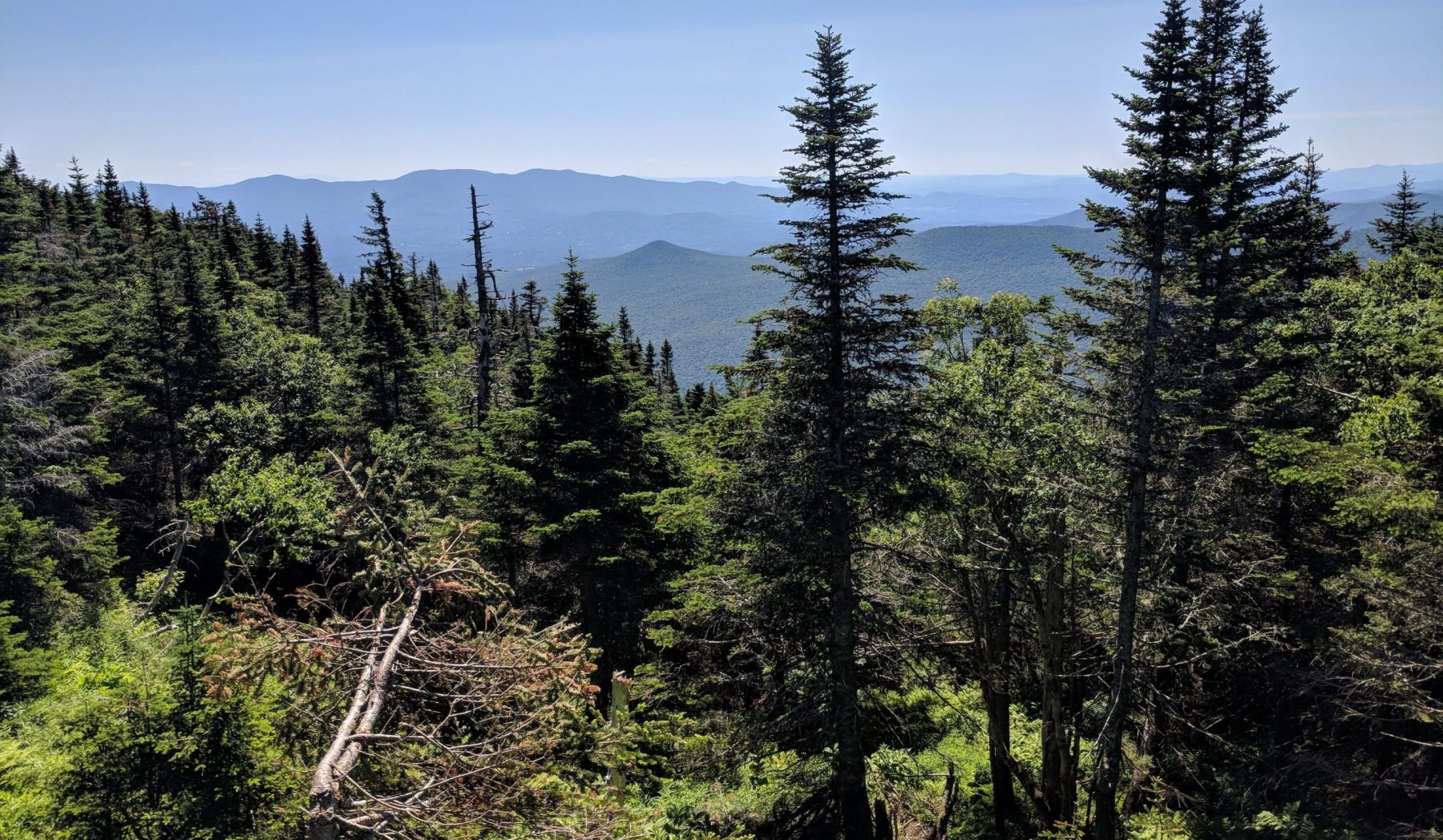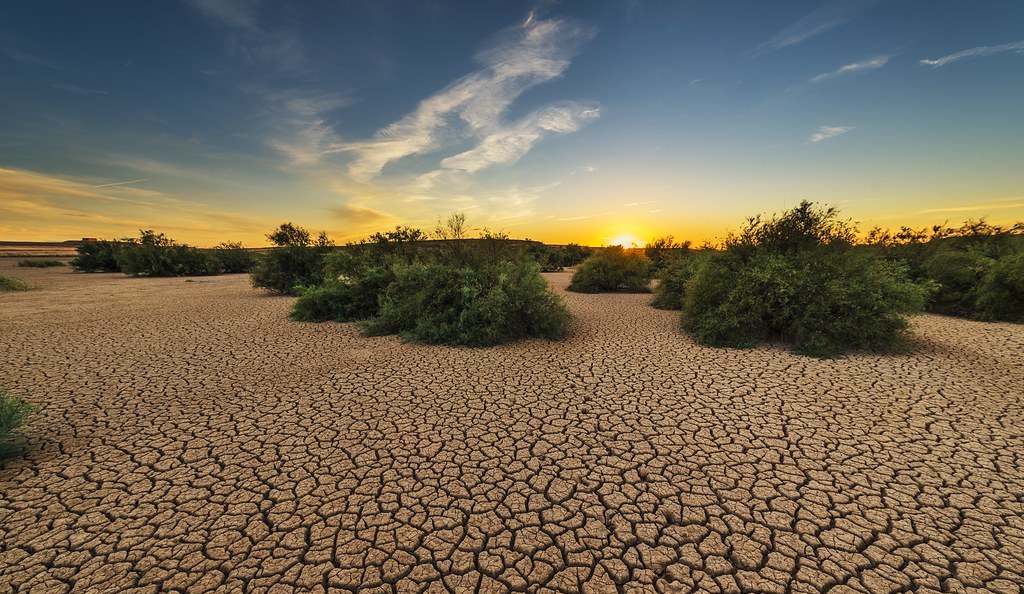- Climate
More than 75 percent of the Amazon rainforest is losing resilience, as described by the Washington Post
Key takeaway
The Amazon rainforest is the largest rainforest in the world, home to a vast array of biodiversity, including many species yet to be discovered by scientists. It faces significant risks from deforestation and climate change, and recent research shows that these threats are causing much of the forest to lose resilience – the ability to bounce back from disturbances such as logging, fire and drought.
Reviewed content

Verdict:
Claim:
More than 75 percent of the rainforest is losing resilience; More than half of the rainforest could be converted into savanna in a matter of decades
Verdict detail
Accurate: A recent study found that “more than three-quarters of the Amazon rainforest has been losing resilience since the early 2000s."
Imprecise: Rather than turn into a savanna ecosystem, the Amazon rainforest would more likely transition into a “savanna-like” ecosystem. The difference would be that the degraded Amazon ecosystem would not contain as many tree species and would not store as much carbon as a savanna ecosystem.
Full Claim
Satellite images taken over the past several decades reveal that more than 75 percent of the rainforest is losing resilience...This widespread weakness offers an early warning sign that the Amazon is nearing its “tipping point”; The ecosystem could suffer sudden and irreversible dieback. More than half of the rainforest could be converted into savanna in a matter of decades
On March 7, the Washington Post published a story about the declining health of the Amazon. The story, based on a March study published in Nature Climate Change, reported that, according to satellite images, the Amazon rainforest is “nearing its tipping point,” with more than 75 percent of the rainforest losing resilience.[1] The Nature Climate Change study analyzed the Amazon’s resilience since the early 2000s and, consistent with the claim in the Washington Post, it found that “more than three-quarters of the Amazon rainforest has been losing resilience since the early 2000s.”
The Washington Post’s claim “is 100% correct and it is the main result of the article on Nature Climate Change,” said Carlos Nobre, earth system scientist at the University of São Paulo, Brazil’s Institute of Advanced Studies.
Research shows that the Amazon rainforest – the largest rainforest in the world – faces “dual threats” of climate change and deforestation.[2] A 2021 study estimated that, as a result of human activities, the Amazon has seen a “forest loss of around 17%, of which 14% has been converted mostly to agricultural land.”[3] Deforestation and climate change can lead to reduced dry season rainfall in the Amazon, and this lack of rain can lead to reduced forest resilience, making it more susceptible to future stressors, such as fire, drought and logging.[4]

The image shows the decline of moisture in the air over the Amazon rainforest, particularly across the south and southeastern Amazon, during the dry season months – August through October – from 1987 to 2016. The measurements are shown in millibars. Credit: NASA/JPL-Caltech, NASA Earth Observatory
“The twin pressures of deforestation and climate change on the Amazon rainforest remain a great concern,” Peter Cox, professor of climate system dynamics at the University of Exeter, wrote in Carbon Brief in 2020. “We are unlikely to know the vulnerability of the rainforest to climate change with any confidence until it is too late. However, we are sure that human-caused deforestation reduces the resilience of the forest to climate change and other stressors.”
As reported by Carbon Brief, the Nature Climate Change study’s lead author Chris Boulton noted in a press conference that, although his study shows that the Amazon rainforest is “approaching a tipping point” – the point when changes in the forest become irreversible – it is unclear, based on research so far, when that tipping point will occur.
The Washington Post also claims that “more than half of the rainforest could be converted into savanna in a matter of decades.” That claim “needs a few considerations,” Nobre said.
“The conversion to tropical savanna natural ecosystem is more complicated and it would take many centuries,” Nobre said. “The likely conversion is towards open canopy degraded ecosystems. They may look like a tropical savanna, but not with all the tree species and also not storing as much carbon in the soil.”
Scientists’ Feedback

Earth System Scientist, University of São Paulo, Brazil’s Institute of Advanced Studies
The first [claim – “satellite images taken over the past several decades reveal that more than 75 percent of the rainforest is losing resilience”] is 100% correct and it is the main result of the article on Nature Climate Change.
The second [claim] needs a few considerations. Particularly, the sentence “more than half of the rainforest could be converted into savanna in a matter of decades”.
The conversion to tropical savanna natural ecosystem is more complicated and it would take many centuries. The tropical savannas to the south and north of the Amazon rainforest are very rich in fire-resistant tree species. The likely conversion is towards open canopy degraded ecosystems. They may look like a tropical savanna, but not with all the tree species and also not storing as much carbon in the soil.
Perhaps the sentence could be: “more than half of the rainforest could be converted into ‘savanna’-like open canopy degraded ecosystems in a matter of decades”.
References:
- Boulton et. al (2022). Pronounced loss of Amazon rainforest resilience since the early 2000s. Nature Climate Change.
- Malhi et. al (2008). Climate Change, Deforestation, and the Fate of the Amazon. Science.
- Gatti et. al (2021). Amazonia as a carbon source linked to deforestation and climate change. Nature Climate Change.
- Zemp et. al (2017). Deforestation effects on Amazon forest resilience. Geophysical Research Letters.



